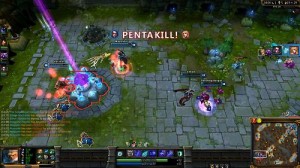Hello, and welcome to Friday! Today we are looking at gaming with friends. A large part of gaming is dedicated to playing games with friends locally and over the internet. These days it is difficult to find a game that does not have some kind of multiplayer interactivity tacked on somewhere. When a game is found that is truly multiplayer the urge is there to get as many friends as possible to join in. Sometimes those friends have no experience of the genre.
These are not party games that I am talking about either. Anyone can jump in and play Mario Party and have a blast. No, what we are focusing on today is the less casual side of things. Starcraft 2, World of Warcraft or, yes, even Call of Duty. These games require a great deal more effort and can tax even the most experienced minds.
When asking a friend to join a game which they have never played before there are two ways to go about teaching them. The first is to hold their hands the whole way through. The second, and less forgiving, is to throw them in at the deep end and let them fend for themselves. Both methods have their advantages and disadvantages, so lets have a look at them.
The first option is to guide a friend as they pickup a game. Often new genres come with obscure rules about how a game should be played, regardless of how it appears at first glance. Tutorials are often found in games to help new players learn the interface, but having an expert around is useful to explain the finer details. The more learned player can then proceed to explain exactly how the game should be setup, played and ultimately completed.
The drawback with this method is the new player can end up with strategies that are too similar to the teacher, or be given a play style that is not suited to them. Some people may just wish to go off and play a game solo until they have learned all the can by themselves.
The second option is put a new player straight into a live game (hopefully after a brief explanation of the controls). A gamer in this situation is then forced to learn as they go, figuring out mechanics as they are encountered. Someone who is able to adapt quickly may be able to find weaknesses in their opponents strategies, especially if they are not expecting much from a beginner. In this situation a player should be encouraged to ask many questions as they play.
The downside here is that, when faced with multiple losses, some people may feel like never playing again. Often people are likely to declare a game as ‘bad’ if they are not able to win on some level, or demand advantages to help them compete. I think we all have experienced this as children.
There can be a middle ground though. Teach someone how the game is played, send them into a live game and explain how their actions affected their performance. Despite having little knowledge, experience can be gained through constant feedback and encouragement. Watching recorded games, or even replays of past defeats can help to understand what goes wrong.
Ultimately, people should be able to learn to play a new game at their own pace. Forcing someone to play before they are ready will often have consequences, and will not make for a good environment to play in.
When I was younger my brother refused to play most multiplayer games with me. Despite only being a year younger, he was so convinced that he would lose he would demand cheats that would guarantee him victory ever time. this carried over to our adult life where he would only play game that he knew I was useless at. Never let someone you play with get into this mindset as it could mean very unrewarding game time.
This week we are attempting to teach our own Pierson how to play Starcraft 2. Everything went fine when we taught him how to play World of Warcraft, so hopefully he will enjoy his first RTS game.
Readers, how successful have you been in attempting to teach friends to play games with you? Have you had bad experiences with gaming bullies? Let me know in the comments!

